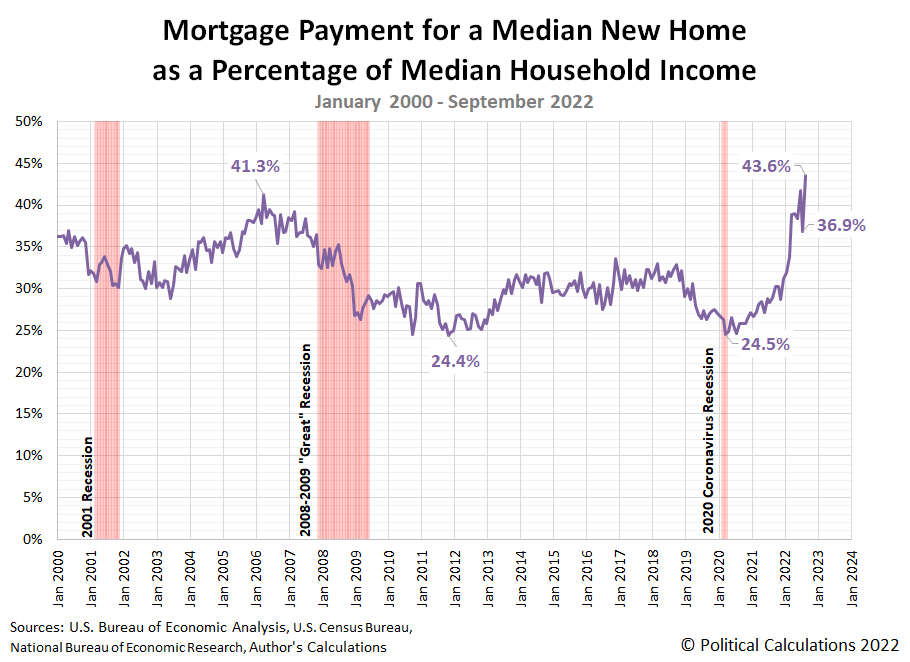After taking a breather last month, the affordability of the typical new home sold in the U.S. nose-dived in September 2022.
That negative change is a consequence of two main factors. First, the price of a median new home spiked up about 8% to an initial estimate of $470,600 in September 2022, the second-highest figure on record (July 2022's $479,800 is the current record-holder).
The second factor is the surge of mortgage rates in September 2022. The interest rate for a 30-year conventional mortgage jumped from an average of 5.22% in August to 6.11%. The following chart shows the combined effect of these two factors, as measured by the percentage of a typical American household's monthly income would have to go to pay a mortgage payment on the typical new home sold.
At an initial estimate of 43.6% for September 2022's median household income, the cost of owning a typical new home has never been higher for a typical American household. That's also true in terms of raw affordability, where the median household income would only cover 17.1% of the sale price of the median new home sold in September 2022.
But the spike in ownership cost for a new home may not be over yet. Although the post-pandemic recession rise of new home prices is slowing, mortgage rates reached over the 7% threshold in October 2022. Unless the median price of new homes falls because of crashing demand as some observers anticipate, next month could see another new low in their relative affordability.
References
U.S. Census Bureau. New Residential Sales Historical Data. Houses Sold. [Excel Spreadsheet]. Accessed 26 October 2022.
U.S. Census Bureau. New Residential Sales Historical Data. Median and Average Sale Price of Houses Sold. [Excel Spreadsheet]. Accessed 26 October 2022.
Freddie Mac. 30-Year Fixed Rate Mortgages Since 1971. [Online Database]. Accessed 26 October 2022.
Political Calculations. Median Household Income in September 2022. [Online Article]. 1 November 2022.
Labels: personal finance, real estate
Welcome to the blogosphere's toolchest! Here, unlike other blogs dedicated to analyzing current events, we create easy-to-use, simple tools to do the math related to them so you can get in on the action too! If you would like to learn more about these tools, or if you would like to contribute ideas to develop for this blog, please e-mail us at:
ironman at politicalcalculations
Thanks in advance!
Closing values for previous trading day.
This site is primarily powered by:
CSS Validation
RSS Site Feed
JavaScript
The tools on this site are built using JavaScript. If you would like to learn more, one of the best free resources on the web is available at W3Schools.com.
